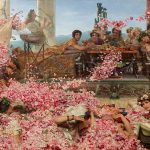Paul Caponigro, a revered American photographer, embarked on a lifelong journey of visual exploration that would leave an indelible mark on the world of fine art photography. Born on December 7, 1932, in Boston, Massachusetts, Caponigro’s early exposure to the arts and his familial connection to photography set the stage for a career characterized by a deep connection to nature, mysticism, and a relentless pursuit of visual expression.
Growing up in a family of artists, with his mother and brother being painters, Caponigro’s creative inclinations were nurtured from an early age. His fascination with the visual arts was complemented by his introduction to photography through his cousin, who worked as a photographer for the Boston Symphony Orchestra. This early exposure sparked Caponigro’s interest in the technical and artistic possibilities of the medium.
In 1950, at the age of 18, Caponigro enrolled at the Boston University College of Fine Arts, where he studied under the influential photographer Minor White. White’s teachings, grounded in the principles of the contemplative approach to photography, profoundly influenced Caponigro’s artistic philosophy. Under White’s guidance, Caponigro began to explore the intersection of photography and spirituality, laying the foundation for the distinctive style that would define his later work.
Journeying Through Landscapes and Cultures
Caponigro’s photographic exploration led him to traverse landscapes and immerse himself in diverse cultures, seeking inspiration and transcendent moments. His travels across the United States and Europe, particularly in Ireland, resonated deeply with his profound connection to the natural world and his fascination with ancient civilizations.
One of Caponigro’s most iconic bodies of work emerged from his extensive travels in Ireland. His series of photographs captured the mystical and timeless qualities of the Irish landscape, often incorporating ancient stones, megalithic monuments, and Celtic crosses. The ethereal atmosphere and symbolic richness of these images reflected Caponigro’s ability to infuse the mundane with a sense of the sacred, inviting viewers to contemplate the deeper layers of the world around them.
Caponigro’s exploration extended beyond the physical realm, delving into the realms of symbolism and abstraction. His series on the Stone Circles of England and Scotland, such as “Callanish” and “Stonehenge,” revealed his fascination with the intersection of ancient symbolism and the cosmic order. These images transcended mere documentation, becoming meditations on the profound connections between humanity, nature, and the cosmos.
Mastering the Craft
Paul Caponigro’s commitment to mastering the technical aspects of photography became evident in his meticulous approach to the craft. He embraced traditional darkroom techniques with precision, employing methods such as dodging, burning, and multiple exposures to achieve the desired visual effects. His mastery of the Zone System, a photographic technique developed by Ansel Adams and Fred Archer, allowed him to achieve a full range of tones in his prints, enhancing the depth and emotional resonance of his images.
Caponigro’s technical prowess was complemented by his innovative use of photographic tools. He experimented with distortion techniques, using lenses to manipulate perspective and create images that challenged conventional perceptions. His ability to weave technical precision with artistic vision positioned him as a pioneer in the exploration of photography as a medium for visual poetry.
One of Caponigro’s notable experiments involved the use of a special lens to distort reality, resulting in the renowned image “Running White Deer, County Wicklow, Ireland” (1967). The photograph captures the fleeting moment of a running deer, its form elongated and surreal. This distinctive approach showcased Caponigro’s willingness to push the boundaries of conventional photographic representation, inviting viewers to experience a heightened sense of reality.
Paul Caponigro’s Enduring Impact on Photography
Paul Caponigro’s legacy extends beyond his individual works to encompass his broader influence on the world of fine art photography. His commitment to the spiritual dimensions of photography, combined with technical excellence, inspired countless photographers to view the medium as a means of profound expression.
Throughout his career, Caponigro received numerous accolades, including the Guggenheim Fellowship and the National Endowment for the Arts Grant. His work has been exhibited globally, and his photographs are held in prestigious collections, including the Museum of Modern Art in New York and the Victoria and Albert Museum in London.
As an educator, Caponigro played a pivotal role in shaping the next generation of photographers. He conducted workshops, shared his insights into the creative process, and emphasized the importance of cultivating a personal vision. Caponigro’s impact on photography education and his dedication to nurturing individual expression underscored his belief in the transformative power of visual storytelling.



